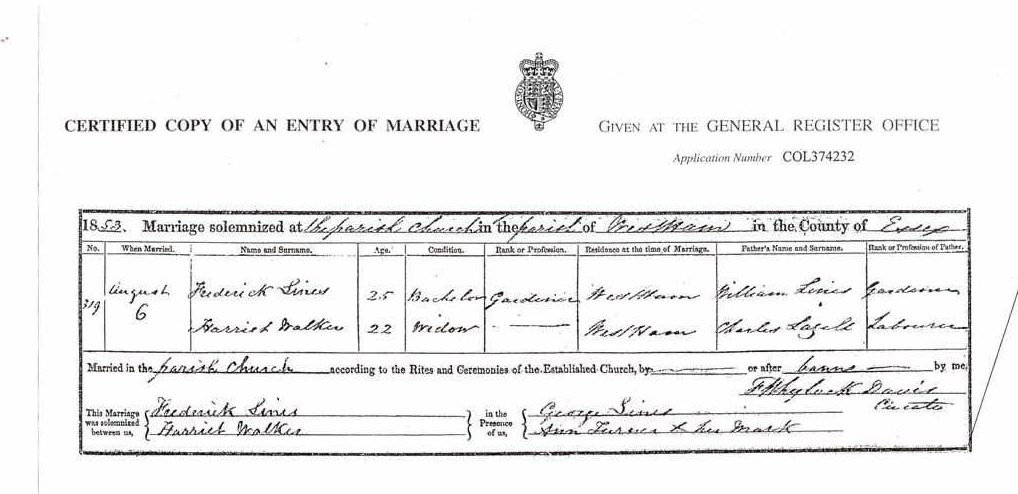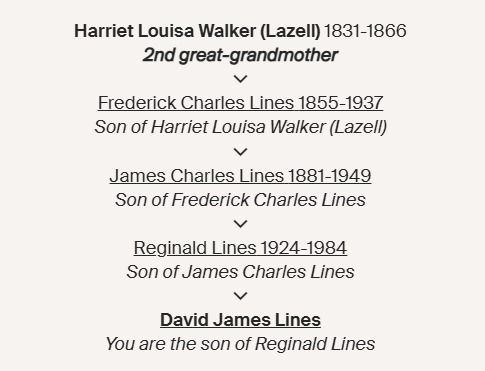Harriet Louisa Lazell, my great-great-grandmother.
Harriet Lazell was born in Great Ilford on 6 February 1831. “Great Ilford” was the historic name for what is now simply Ilford, a large town in the London Borough of Redbridge, East London. The prefix “Great” distinguished it from the nearby, smaller area of Little Ilford.
At age 10, she lived on Ilford High Street, now High Road, with her parents Charles (35) and Harriet (30), and siblings Maria (8), Sarah (6), Charles (4), and Emma (2).
In 1847, she married Thomas William Walker, who died in 1849. Harriet was widowed; they had no children in their two years of marriage. She married Frederick Lines, my great-great-grandfather, on 6 August 1853 at St Margaret’s Church, Barking. They lived on Goodmayes Lane, Barking.

In 1861, Frederick and Harriet lived on Goodmayes Lane with their children Emily, Frederick, James, Harriet, and Elizabeth. At that time, Goodmayes Lane was part of an undeveloped rural area of Essex, mostly open farmland. Frederick was likely employed locally as an agricultural labourer. In March 1865, their sixth child, Alfred, was born.
The July 1866 London cholera epidemic was the city’s last major outbreak, concentrated in the East End, where areas had not yet been connected to the new sewage system. The outbreak was caused by contaminated water from the Old Ford reservoir of the East London Waterworks Company. The water intake on the River Lea was above a main London sewer outlet, and the tidal Thames meant sewage flowed back upstream, contaminating the reservoir.
The East London outbreak claimed 5,596 lives, including my great-great-grandmother Harriet (35), daughter Harriet (7), and son Alfred (1). Harriet’s son William and his sister Elizabeth were taken into care at the Ashley Down orphanage in Bristol. It is unclear where her other two children, Frederick (my great-grandfather) and James, went when their siblings were taken into care.
Harriet died on 25 July 1866 and was buried on 27 July 1866 in St Margaret’s Parish Church, Barking, Essex.
The East London Water Works Co. was found guilty of supplying contaminated water from the River Lea, stored in open reservoirs. Initially, the company denied involvement in the outbreak. The company engineer, Charles Greaves, stated in The Medical Times and Gazette that the water pumped and distributed from Lea was safe to drink and use. Only after the company admitted several months later to violating the Metropolitan Water Act, including pumping polluted water when demand was high, was stricter public control of water companies demanded.
I can’t imagine the misery, trauma, and pain brought by a cholera epidemic. There must have been an overwhelming sense of helplessness, with no cure and little understanding of the disease.



Comments are closed